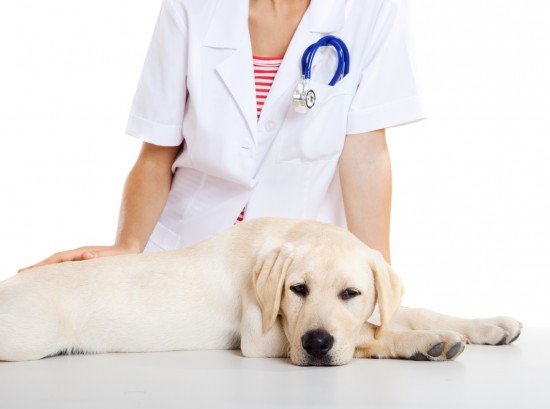

As all dog owners know it's really important to check a pet over after having been out for a walk in the countryside or through a park where dogs are allowed off their leads. It is fairly common for a dog to suffer a small injury whether it's a tiny cut or a larger type of surface wound. However, if you don't treat even the smallest of wounds correctly it can turn into something rather more serious and problematic especially if it gets infected and bacteria manages to penetrate deep into skin tissue.
It's really important to treat a small wound as early as possible and there are some very effective antibiotic ointments and creams on the market which you can buy over-the-counter from good pet stores. You may even want to get an ointment through your vet, but whichever way, it's really important to check the "use by" date on the medication before applying it to a wound.
Some wounds however quickly treated can turn into an abscess due to the fact that bacteria gets in and then continues to fester which can happen on an injury anywhere on your pet's body. More often than not small injuries on legs or the underside of your pet's body go unnoticed and bacteria manages to penetrate deep into your pet's skin tissue. A quick brush over after a walk will help you notice if there is any sort of cut or abrasion so you can treat it straight away and therefore reduce the risk of an infection taking hold.
The most common bacteria to cause a skin infection is pasteurella multocida. However, another one is staphylococcus intermedius and both of these can usually be treated by using a topical antibiotic ointment. The problems begin when the bacteria gets deeper into the dog's skin where it can grow and fester which then turns into a more serious infection in the form of an abscess. If left untreated, this is a very painful condition for a dog to have to deal with.
The first thing a vet normally does is carry out a swab test to see which type of bacteria is causing the infection and this is done by swabbing the infected area. A blood test would also be needed because it is really important to know if the infection has entered into the bloodstream. As soon as a correct diagnosis has been made, the vet would be able to recommend and begin the right course of treatment.
In the first instance the majority of skin injuries, small cuts or minor abrasions can be successfully treated with the right type of topical ointments and solutions. However, if the bacteria penetrates skin tissue more deeply it causes a serious infection which turns into an abscess and as such the treatment would need to be rather more aggressive and vets would need to thoroughly clean, drain and then flush the infected area in order to prevent a deeper infection occurring which could cause more complications. The dog would then be put on a course of antibiotics so the bacteria can be brought under control.
The type of antibiotic used would depend on the seriousness of the abscess and how deep it is in the dog's skin tissue. Should the infection have entered into the bloodstream, the vet would need to make a thorough examination of the dog and carry out necessary tests to find out which bacteria is causing the infection before recommending a course of treatment.
It is really important to keep on top of any sort of skin injury, cuts and abrasions which then helps prevent bacteria from taking hold. If the bacteria does manage to go that much deeper, then a painful abscess may form and the infection may even enter into your pet's bloodstream which is not only extremely painful but very dangerous to your dog's health.
As part of your doggy medicine cabinet, you should include a few topical treatments which are specifically formulated for use on dogs. These over-the-counter anti-bacterial treatments, whether it's an ointment or solution can help reduce the chances of an infection setting in. You may also like to invest in some anti-bacterial shampoo which will certainly help prevent the bacteria from returning and taking hold again. You may need to talk to your vet to see if they can prescribe a stronger anti-bacterial shampoo which you can use in conjunction with the treatment they have prescribed for you dog.
Catching injuries, cuts and abrasions early is really important because it helps reduce the risks of a more serious infection taking hold. An abscess is a very painful and serious condition which can lead to all sorts of other health issues. This is especially true if the bacteria gets into your pet's bloodstream. If you have any doubts about an infection, you should make an appointment and take your dog to see the vet so a correct diagnosis can be made followed by a treatment. The quicker the abscess is treated, the faster you dog will recover without having to put up with too much pain and discomfort.
Copyright © 2005-2016 Pet Information All Rights Reserved
Contact us: www162date@outlook.com